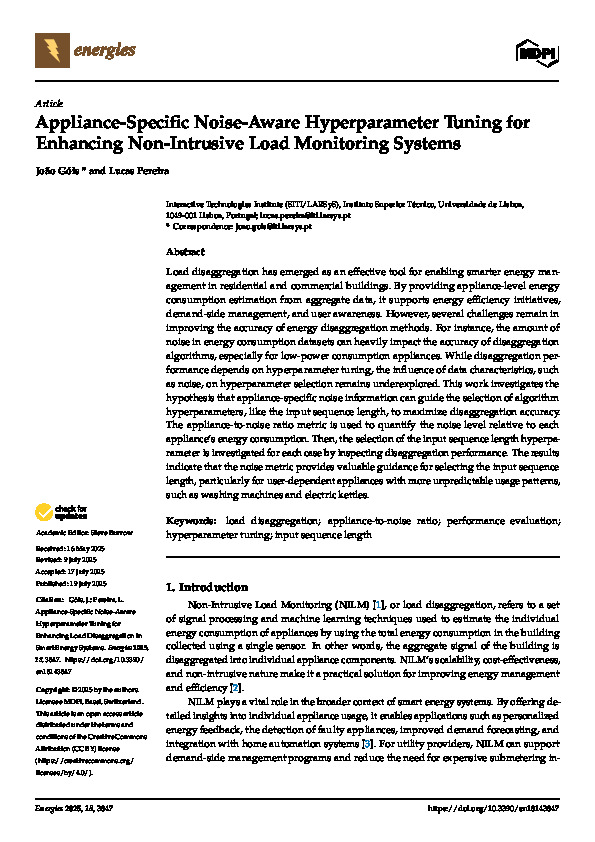Appliance-Specific Noise-Aware Hyperparameter Tuning for Enhancing Non-Intrusive Load Monitoring Systems
Abstract
Load disaggregation has emerged as an effective tool for enabling smarter energy management in residential and commercial buildings. By providing appliance-level energy consumption estimation from aggregate data, it supports energy efficiency initiatives, demand-side management, and user awareness. However, several challenges remain in improving the accuracy of energy disaggregation methods. For instance, the amount of noise in energy consumption datasets can heavily impact the accuracy of disaggregation algorithms, especially for low-power consumption appliances. While disaggregation performance depends on hyperparameter tuning, the influence of data characteristics, such as noise, on hyperparameter selection remains underexplored. This work investigates the hypothesis that appliance-specific noise information can guide the selection of algorithm hyperparameters, like the input sequence length, to maximize disaggregation accuracy. The appliance-to-noise ratio metric is used to quantify the noise level relative to each appliance’s energy consumption. Then, the selection of the input sequence length hyperparameter is investigated for each case by inspecting disaggregation performance. The results indicate that the noise metric provides valuable guidance for selecting the input sequence length, particularly for user-dependent appliances with more unpredictable usage patterns, such as washing machines and electric kettles.

